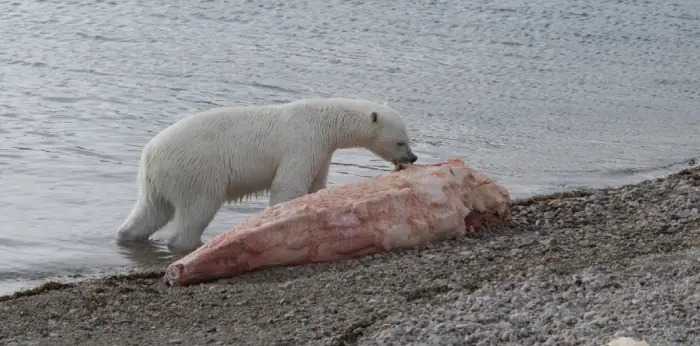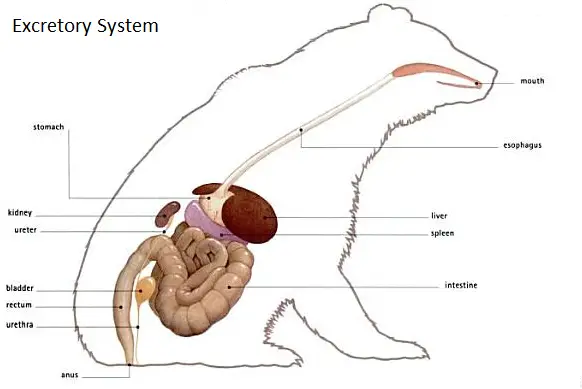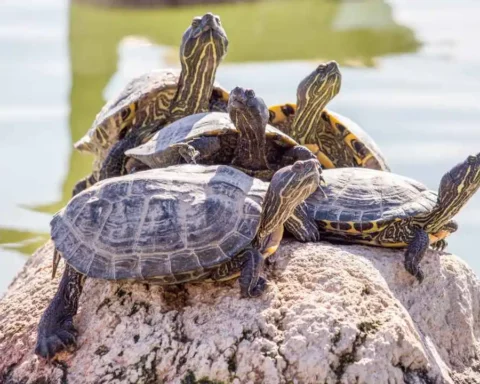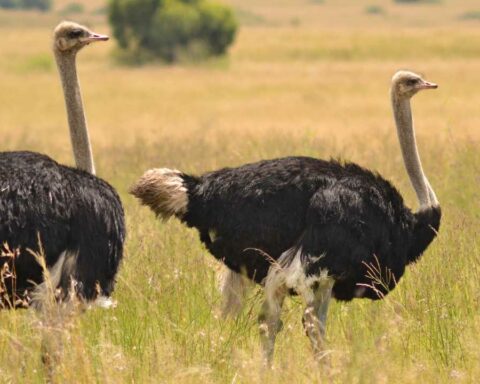Polar Bears are the most interesting to learn among all the bears. Their adaptability to the extremes of the tundra and their unique set of survival skills make them very interesting to study. Like its all other adaptations, the Polar Bear Digestive System is also one of its important adaptation to its environment. The unique abilities of Polar Bear Digestive System enables it to survive in the extremes of the northern tundra. We have gathered complete information on the digestive system of a polar bear that will help you learn how it is vital for the polar bear.
Polar Bear Digestive System
- The polar bear digestive system is similar to the digestive system of humans.
- 2 kg (4.4 pounds) of fat is at least required by a polar bear in a day to survive and move in the arctic.
- The polar bear digestive system takes 20 hours to digest the food (seal blubber).
- The polar bear faeces (poop) is liquid, gelatinous and dark brown in color when its food in take is mainly seal blubber.
- The polar bear stomach is muscular and expandable enough to hold 15% to 20% of the polar bears weight in it.
- The stomach has the capability to digest 97% of the fat and 84% of the protein contained in the food that a polar bear eats in a day.
- Just like dogs, polar bears can sweat through their mouth and nose.
- The bladder of a polar bear is similar to that of other bears.

Polar Bear Digestive System Adaptations
- The polar bear stomach also has one of the adaptation of the polar bear. It enables the polar bear to intake large meals when found unexpectedly.
- Food is hard to find for polar bears in the north and when they find large amount of food (dead whale or a lot of seals) it will eat much more than its usual meal. This large amount of food intake is only possible due to the adaptation of polar bear digestive system in which the stomach can expand to hold food 20% of the polar bear’s weight.
- Unlike other bears the polar bear stomach is adapted to efficiently process meat rather than plants.
- The polar bear has multi-reniculate kidneys like other marine mammals i.e. a system of several small kidneys.
- Polar bears do not drink much water as they get most of their water from the seal blubber. They do not urinate (pee) often as their digestive system efficiently utilizes all their water intake from the seal blubber. This polar bear digestive system adaptation enables it to survive without fresh water in the north where only sea water, ice and snow is available.
Learn more: What Do Polar Bears Eat
Polar Bear Digestive System Diagram & Anatomy






